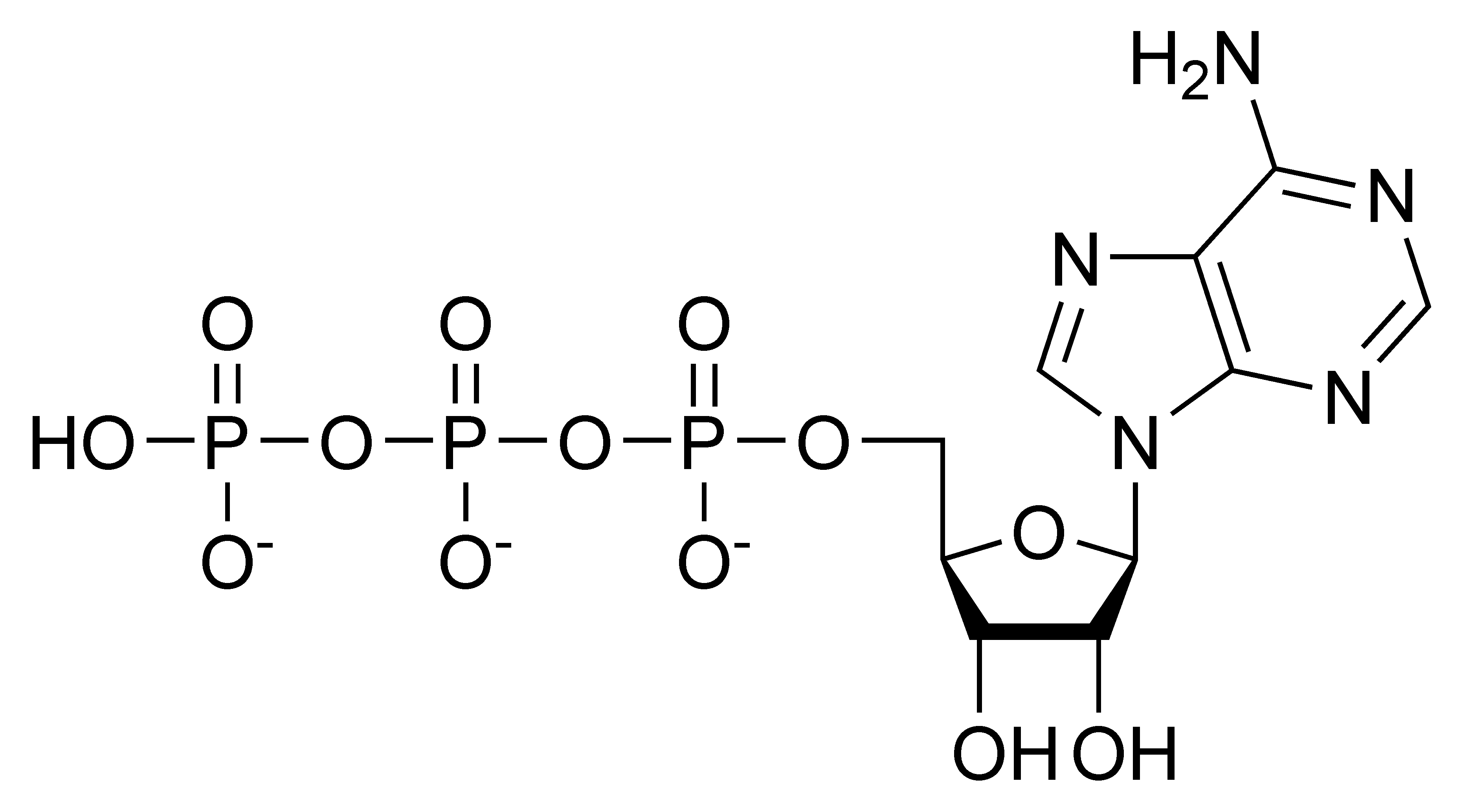Adenosine Triphosphate
Also known as ATP, this molecule contains chemical energy used for various cellular activities. ATP is the main source of energy for most cellular activities in most animals. ATP contains an adenine base attached to a molecule of ribose sugar. Attached to that is a number of phosphate groups where most of the energy for a human body comes from. A molecule with only one phosphate group is AMP. A molecule with two phosphate groups is called ADP. ATP is a molecule with all of its phosphate groups. ATP was discovered by Karl Lohmann in 1929 but he did not have the right structure. In 1948, it was then first synthesized by Alexander Todd. ATP is mainly created in the thylakoids of a chloroplast during the light dependent reactions. Some of the ATP is consumed by the plant to complete photosynthesis but the rest is stored and then when the plant is eaten, transfers to the animal that ate the plant and even the animal that ate the animal that ate the plant. Simplified, ATP is transferred through many systems until it is fully consumed.  |
Glucose Glucose is a monosaccharide (a simple sugar). It is the end product of photosynthesis and is one of the main beginning ingredients of cellular respiration. The word glucose originates from the Greek word glukus which possesses the meaning "sweet". Glucose is colorless and can dissolve in water. The molecular structure of glucose is C6H12O6 which means that glucose contains 6 carbon atoms, 12 hydrogen atoms, and 6 oxygen atoms.  |